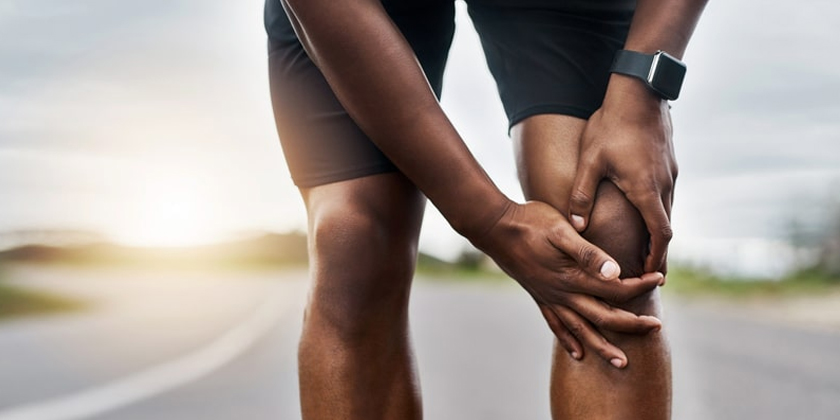The Ultimate Guide to Preventing and Treating Common Sports Injuries
What Are Common Sports Injuries?
Why Addressing Sports Injuries Matters
According to the CDC, sports injuries lead to more than 3.5 million emergency room visits every year in the United States. With five years of experience as a sports science researcher I discovered that sports injury prevention methods help lower downtime and healthcare expenses. When athletes understand proper sports injury treatment methods they can recover more quickly and resume their physical activities with less risk.
Key Common Sports Injuries
1. Sprains and Strains
Sprains affect ligaments while strains affect muscles and tendons.
- Prevalence: The American Academy of Orthopaedic Surgeons reports that sprains and strains most commonly affect ankles and hamstrings.
- Symptoms: Pain, swelling, limited mobility.
- Treatment: Athletes can recover from injuries through two key treatment steps: the RICE method of Rest, Ice, Compression, Elevation plus physical therapy from the Cleveland Clinic.
- Recovery: 2–6 weeks, depending on severity.
2. Fractures
Fractures represent broken bones which typically result from participating in high-impact sports.
- Types: The National Health Service classifies fractures as either stress-induced through overuse or acute resulting from trauma.
- Symptoms: Intense pain, swelling, deformity.
- Treatment: Immobilization (cast), surgery for severe cases, rehabilitation.
- Prevention: The American College of Sports Medicine recommends using proper footwear together with strength training exercises as prevention methods.
3. Dislocations
Dislocations happen when bones become misaligned from their joint position.
- Common Sites: Shoulders, knees, fingers (Stanford Health Care).
- Symptoms: Visible deformity, severe pain, immobility.
- Treatment: Reduction (realignment), sling, physical therapy.
- Risks: Recurrent dislocations without proper athletic recovery.
4. Tendonitis
Tendonitis develops as a result of tendons becoming inflamed due to repetitive stress.
- Common Areas: The Achilles tendon along with tennis elbow and rotator cuff injuries are frequently affected areas according to the Mayo Clinic.
- Symptoms: Pain, stiffness, reduced strength.
- Treatment: Rest, anti-inflammatory medication, stretching exercises.
- Prevention: Gradual training progression, proper technique.
Causes and Risk Factors
- Overuse: Performing repetitive motions repeatedly leads to sprains and strains or tendonitis according to the American College of Sports Medicine.
- Poor Technique: Incorrect form increases injury risk (NHS).
- Inadequate Equipment: The CDC notes that injuries can result from using worn shoes or not having protective gear.
- Physical Factors: The Cleveland Clinic identifies a shortage of flexibility and strength along with inadequate conditioning as physical risk factors.
Sports Injury Prevention Strategies
- Warm-Up and Stretching: According to the American Academy of Orthopaedic Surgeons 10–15 minutes of dynamic stretching routines decrease the occurrence of sprains and strains.
- Proper Equipment: Wear shoes designed for your sport and protective gear when playing sport (Stanford Health Care).
- Strength Training: Muscle building strengthens joint support which prevents fractures according to the American College of Sports Medicine.
- Rest and Recovery: Rest for 1–2 days each week to prevent overtraining (Mayo Clinic).
- Technique Training: Coaches should help athletes maintain proper technique to ensure correct form according to NHS standards.
Sports Injury Treatment Approaches
- Immediate Care: Sprains and strains should be treated with RICE during the first 48 hours according to Cleveland Clinic guidelines.
- Medical Evaluation: When you suspect a fracture or dislocation seek medical evaluation from professionals (CDC).
- Physical Therapy: The American Physical Therapy Association states that exercises tailored to individual needs rebuild strength and mobility.
- Surgery: Severe fractures or ligament tears require surgical intervention followed by athletic rehabilitation according to AAOS standards.
- Pain Management: Apply ice treatment together with NSAIDs and prescribed medications carefully according to guidelines from the Mayo Clinic.
Challenges in Managing Sports Injuries
- Delayed Treatment: Overlooking symptoms extends the time needed for athletes to recover (Stanford Health Care).
- Access to Care: Physical therapy services remain scarce in underserved regions according to WHO.
- Reinjury Risk: Athletes who resume sports activities before proper healing face increased risk of complications according to the American College of Sports Medicine (ACSM).
FAQ: Common Sports Injuries
What are common sports injuries?
The most frequently seen sports injuries are sprains and strains along with fractures, dislocations, and tendonitis according to Mayo Clinic.
How can I prevent sports injuries?
According to AAOS warm-ups combined with proper equipment use and strength training lessen the occurrence of common sports injuries.
What is the RICE method?
The RICE protocol consisting of Rest, Ice, Compression, and Elevation provides effective treatment for sprains and strains according to Cleveland Clinic.
When should I see a doctor?
Get medical attention if you have intense pain, visible deformity or enduring symptoms (CDC).



